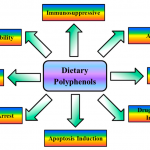Nutrition
Carbohydrate Source Matters . . . Are You Making the Right Choice?
Do you think carbohydrate source is important? It’s pretty common to hear from time to time from patients that if I get my carbohydrates from grains, or if I get my carbohydrates from fruit, or if I get my carbohydrates from say starchy vegetables it doesn’t really matter as long as I get an equivalent amount of carbohydrates. That’s not technically accurate, and what I want to share with you is the reason why.
I picked two examples, pasta and butternut squash, as the carbohydrate sources to compare. Pasta we know can be made from several things, but for this example I’m going to utilize wheat as the source of where it is coming from. The other carbohydrate source example is butternut squash. Let’s just for simplicity sake make the argument that this is 40 grams of pasta versus 40 grams of starchy vegetable and in this case butternut squash. I want to point out a couple of the differences here and why it’s not just about the amount of carbohydrates that you’re consuming. Butternut squash is going to have a much broader nutrient profile to it which means you’re going to get a broader array of vitamins and minerals that are going to be more consistent with supporting your overall health. Pasta or wheat can’t make that argument. You are going to be limited in what you are going to be getting from it. Yes, you will get some B vitamins, a few minerals, but you also get a couple of what are known as anti-nutrients in there as well that are not going to be found in butternut squash in this example.
Vegetable vs. Grain Carbohydrate Source
Fiber
Now to be fair if we make the argument for whole grain pasta or wheat in its lesser refined form does it have fiber? Yes, it does have fiber. However, the amount of fiber that it has per the amount of total carbohydrates is not that high. It’s actually fairly insignificant. If we look at the fiber source for butternut squash it actually makes up a pretty large contribution. If you’ve ever eaten butternut squash, for example you bake a butternut squash, when you cut it in half and look at it and start to pull it apart with a fork you can actually see the fibery components of that. It’s very dense in fiber and there are many benefits, one of which is that it supports good gastrointestinal health.
Potassium
Potassium is something that we routinely need to find in our diet, and choosing the right carbohydrate source will ensure some is included. It is something that helps keep our body alkaline and it’s not something that we’re going to find in the grain category, and again pasta in this example. But, potassium because of its alkalizing nature it’s one of the things that helps form optimal neurological function. We tend to lose potassium easily so we have to continually consume foods that are going to replete potassium. Even from the standpoint of something like blood pressure, potassium is extremely crucial in helping maintain the volume of water in our blood.
Non-GMO
Next let’s discuss Non-GMO. Butternut squash is not genetically modified. Now whether you’re a GMO fan or on the fence about it, the bottom line with genetically modified organisms right now is that we just don’t know. There are a lot of ifs, ands and buts about it that we just are not sure about. Many of these foods that are genetically modified, apart from the genetic modification issue and how that is going to interact with our own genome and how we’re consuming foods, that may not be ideal for us to consume because we have not consumed them throughout our history, the other issue that comes into this and that actually links us in to the next point here is toxicity risk.
Toxicity
When you look at genetically modified foods a lot of the reasons that these foods are modified have to do with the fact that they can have toxins applied to them. You don’t see that with butternut squash or with other starchy vegetables. You don’t want this inherent risk of potentially consuming your food that doesn’t match up to your own genetics, and also considering a food having a very high toxicity risk associated with that. Those risks do increase with your grains or with pasta or something of that nature.
Allergen
Again, you may or may not be in the camp of gluten is a problem. Basically what I’m going to leave you with on this is if you read the medical literature the medical literature is pretty emphatic that gluten is a problem, and it’s not just someone who has celiac disease. We’re also talking about individuals who have what is known as gluten sensitivity. Now again you’re looking at the consistent consumption of a protein that is part of the standard American diet. It’s routinely consumed and the more it is consumed in food the more problematic that food becomes. Butternut squash doesn’t really have risk because it doesn’t have that big allergen in protein in it so it does not have the allergen risk associated with it. There are also some issues that come into play with the irritation and inflammation that comes along with consuming pasta, wheat, gluten that that’s going to create an inflammatory response, and you just don’t get that inflammatory response and accompanying allergen risk from butternut squash or other starchy vegetables.
Rich in Color
That moves us into the next point which is these starchy vegetables are going to be very rich in color. Just think about this as an example, let’s say you have some pasta in one hand and a butternut squash in the other hand, pasta is very dull. It’s either going to be white or brown whereas a butternut squash is going to be very rich and vibrant in color. It’s going to be very orange. Think about the sweet potato having that deep orange color, or maybe even beets, another starchy vegetable, having a very deep red color. The red color that we think about, those are polyphenols, but we also think about those antioxidants. They keep inflammation under control.
Supports Probiotics
Another added benefit that we get from these is that the bacteria in our gut which we all like to talk about now with these probiotics, they like polyphenols. They like antioxidants. They love that color. That color supports their growth. If we’re trying to modify the bacterial environment in our gut consuming foods that are rich in color is very favorable to those organisms. It’s much more complicated than this, but in very simplistic terms if we’re trying to promote the growth of the beneficial organisms and inhibit the growth of some of the non-beneficial organisms that really comes back down to the color component. You completely miss that benefit from consuming pasta and wheat and grains and this whole category of carbohydrates. The same thing can be said going back to the fiber component because fiber additionally is going to enhance the growth of those bacteria as well. It’s going to give them a nice environment in your gastrointestinal tract that helps them flourish and do all the beneficial things that they can do for us.
Plant Estrogens
Now when we think about plant estrogens a lot of times plant estrogens are thought about as it relates to soy, for example. I’m not advocating soy here by any means, but what I am suggesting is that whether it’s butternut squash, beets, turnips, rutabaga, or okra, all of these different types of food with all of this color in them also have a wide variety of plant estrogens in them. The beneficial thing about this is that these are estrogen-like compounds that are not over stimulatory. They stimulate just enough to get the positive benefit from estrogen, but they don’t over stimulate.
So, does the carbohydrate source really matter? I think we can easily answer the question and say yes, it absolutely matters where you get your carbohydrates from. It’s not about 40 grams of carbohydrates versus 40 grams of carbohydrates. It’s much different than that. We have to stop thinking in such a narrow viewpoint of our food and look at what food has to offer beyond just simply calories. It’s not calories in and calories out. This is why two people that can consume 40 grams of pasta versus 40 grams of butternut squash will receive different end results. An individual that makes this a mainstay of their diet is going to be a much healthier individual.
The Stressful Pursuit of the Correct Meal Plan
With literally hundreds of meal plan variations from which to choose, it is no wonder people can become stressed and frustrated. Which one is best and why? Some experts seem to promote the “correct” plan for everyone. If the experts disagree, who is right? With that said, let’s look at some general principles regarding nutrition. Once we grasp these principles, we can do a better job of selecting the proper plan.
Principle #1 – Protein is a Mainstay
Principle #1 – Protein is responsible for a great many bodily processes. One of the primary roles is to act as a structural component of cells and tissues. Without enough protein, the cells and tissues would not function properly. Proteins, by the way, are large, complex molecules made up of smaller amino acid compounds. Some amino acids are made by the body; others (essential) are not. You must get the essential amino acids from your diet. Protein also provides a small amount of energy in absence of carbohydrates and fat. Therefore, consuming high quality, clean (organic, grass fed, free range) protein is extremely important. The idea is consume enough protein to support your system. This depends on your age, activity level, genetics, metabolism, and overall muscular structure.
Principle #2 – Know Your Carbs for the Best Meal Plan
Principle #2 – Carbohydrates produce energy and assist in digestion. Most, such as starch and sugar, break down into glucose. Fiber, another carbohydrate, is vital to digestion, but it does not break down into glucose. Carbohydrates can be either simple or complex. Simple carbohydrates are sugars and can be naturally occurring or added to foods. Natural sugars are found in fruit, dairy, vegetables, legumes, and other whole foods. Added sugars, such as sucrose and dextrose, are packed into processed food, which are usually low in nutrients and high in calories. Generally, we consume far too many carbohydrates in the Standard American Diet (SAD). The principle here is to consume enough carbohydrates, but not too many.
Principle #3 – Fat Does NOT Make You Fat
Principle #3 – We need to eat a reasonable amount of fat to stay healthy. There are two main categories of fatty acids – saturated and unsaturated. Both can be beneficial. However it is wise to limit saturated fats (do not eat more of them than you do unsaturated). Fats help the body maintain its core temperature, absorb nutrients (vitamins A, D, E, K), and provide energy. Additionally, fats are extremely helpful for our cells, brain, hormones, hair, and skin. The dangerous thing with fat is really not so much the eating of fat but the storage of fat. Our bodies suffer greatly because of excess fat accumulation around the organs and waistlines.
With a workable understanding of the three principles, we can better decide what works best for us regarding meal plans. That’s right…I said “works best for us.” There is no once size fits all program that will work the same for everybody. Each of us is different and has different requirements. I will say, however, a Paleo plan or slight variation seems to fit MOST quite nicely.
So where do we begin in selection of a plan for us?
One key to remember is this: Limit carbohydrates to between 50-150 grams daily. This is the “sweet spot” and can be a great place to start. Begin somewhere in the middle and adjust up or down depending on your need. If your body fat is already in an acceptable range, you may be able to consume a little more. If you body fat is out of range on the high side, you will want to really focus on using fat as your primary source of fuel. As an extreme in a high body fat condition, a practitioner may utilize a ketogenic nutrition plan, which forces the body to utilize fat as its main fuel source. This in turn, can substantially lower body fat. I caution you to obtain a practitioner’s supervision with this to avoid excessive muscle wasting.
It can be quite confusing I must admit. Start with a Paleo plan or slight variation and go from there. Many Paleo type plans focus on higher amounts of quality protein and fats and lower calories from carbohydrates. Utilize the glycemic index when selecting carbohydrates and eat at least 80% of them from the low glycemic variety with the remaining 20% coming from the moderate glycemic category. Limit high glycemic carbohydrates.
This should assist you greatly in your selection. Here’s to living the wellness life together!
Learn more from Mark Sherwood at Live4E.
Bioidentical Nutrients such as Folate – Bridging the Gap between Nature and Modern Day Food
One of the realities of the aging process is that our hormones begin to decline. This is best noted by menopause in females and low levels of testosterone in males. Both states are the result of inadequate hormone availability which goes on to often promote physical and emotional feelings that are less than ideal. To support the restoration of a better state of health, hormone replacement is often given. However, the administration of synthetic forms of hormones raises questions as they are not naturally found in the human body. As a result, many often turn to hormones in the form our bodies produce them. These are known as bioidentical hormones, meaning they are exactly identical biologically to the hormones that our body produces. Bioidentical hormones are recognized by many as a safer option to synthetic hormones with more predictable outcomes.
The Importance of Bioidentical Nutrients
If at this point you are thinking, great, another hormone article, don’t. I started out with the example of bioidentical hormones to illustrate the significance of using substances that are intrinsic to the function of our bodies. While it is often not discussed, the use of a bioidentical nutrient is just as relevant as a bioidentical hormone. Bioidentical nutrients are easily recognized by our bodies and quickly incorporated into crucial metabolic pathways that support everything from energy production to immune health. These are the same forms of nutrients that you would find in nature if you were picking and gathering food. These forms of nutrients represent some of the most important aspects of food when it comes to promoting overall health.
Therefore, if bioidentical nutrients are beneficial, that must mean that synthetic forms of nutrients have some inherent problem. Indeed, this is the case just as with synthetic hormones. The main problem with synthetic, or non-bioidentical, substances is that they are not easily incorporated into our normal bodily systems. Our body has to work overtime to get them to function and even then there remain some limitations.
The Folate vs. Folic Acid Dilemma
Likely the best example of the need for bioidentical nutrients can be found with B9, or folate. Many will better recognize the name folic acid. Folic acid has become the more common name in our society and can easily be found in many packaged foods and the average over-the-counter multivitamin or B complex vitamin. As effortless as it is to find folic acid in our food supply, one might think this is the best form of the nutrient. However, the buyer should beware. The incorporation of folic acid throughout the food supply has served the benefit of reducing birth defects, yet this is only part of the story. The rest of the story about this synthetic form of B9 is that it is not found in nature and therefore our bodies have to modify it to work. Over time there are negative outcomes associated with this, including the dreaded condition cancer. Folic acid truly is a double edged sword.
In contrast, folate, the bioidentical form of B9 has not been shown to have these same effects. The rationale seems logical. As folates are consumed, either through food or supplementation, they are quickly and easily assimilated into our body systems and used to promote growth, generate new tissues and drive detoxification, just to name a few. There are no detrimental effects from folate use as our body knows exactly what to do with it. In fact, studies have shown that when it comes to folic acid versus folate, the human gut has a very difficult time converting folic acid into the necessary folate form (Am J Clin Nutr. 2014 Jun 18).
While little is talked about with regards to bioidentical nutrients, this is a crucial concept that often goes unmentioned. The need for bioidentical nutrients underscores the importance of giving the body the proper form of a nutrient to make sure we adhere to the first motto of healthcare, “First do no harm”. Moreover, the need for bioidentical nutrients also emphasizes eating foods that are in the forms that natures gives them to us, not refined and adulterated. Thus the consumption of bioidentical nutrients is a concept that is inherent to the Paleo Diet. As this reinforces, you will not go wrong eating foods in their most natural state.





